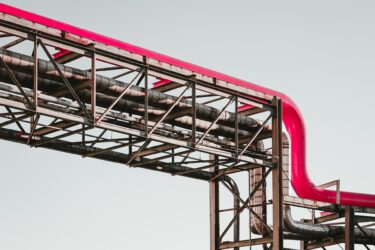Share this article
Refrigerants under NGERs, who needs to report?
Reporting refrigerants under the National Greenhouse and Energy Reporting (NGER) Scheme is a quirky and sometimes confusing process. Not sure if you should be reporting your refrigerants? Not sure how to report refrigerants?
Keep reading to find out what you need to know. Reporting of refrigerants is only required for facilities which falls under specific ANZIC codes – these are:
- Food product manufacturing services (ANZIC classification, Subdivision 11)
- Beverage and tobacco product manufacturing (ANZIC classification, Subdivision 12)
- Retail trade (ANZIC classification, Division G)
- Warehousing and storage services (ANZIC classification, number 530)
- Wholesale trade (ANZIC classification, Division F)
- Rental, hiring and real estate services (ANZIC classification, Division L)
What NGERs information to report about refrigerants
Activities relating to refrigerant use must be reported if they meet the following criteria:
- The refrigerant is used in commercial air conditioning, commercial refrigeration, or industrial refrigeration units,
- Each unit has a total refrigerant gas charge above 100 kg, and
- The refrigerant contained in the unit has a global warming potential above 1000 tCO2e/t gas.
NGER refrigerants – How to report
You can report on emissions from refrigerants either as incidental emissions, or using the methods described in the NGER Measurement Determination 2008 (the NGER Determination).
If you would like to report your refrigerants as incidentals, both the facility and the refrigerant plant will need to meet threshold criteria for reporting incidentals. Reporting of incidentals also needs to adhere to the general principles for measuring emissions laid out in section 1.13 of the NGER Determination. This means that if you choose to report refrigerants as incidentals, the emissions report still needs to be transparent, comparable, accurate and complete. Furthermore, you cannot report refrigerants as incidentals if you are required to collect the information for other legislative purposes.
To report using Method 1 listed in section 4.102 of the NGER Determination you will need to collect information about your refrigerant plant. Specifically, you will need to know:
- The type of cooling the plant is used for (air conditioning, commercial refrigeration, or industrial refrigeration),
- The type of refrigerant gas is used in the plant, and
- The gas charge of the plant.
This information can usually be found either on the plant name plate or in maintenance records.
The NGERS reporting traps
There are a few catches to NGER refrigerant reporting which may trip-up the unwary.
Refrigerants are frequently made up of a mix of gases, often referred to as refrigerant gas blends. In such cases it may not be immediately apparent that the refrigerant needs to be reported. It is important to check the refrigerant specifications to confirm whether it contains a HFC gas listed in Division 2.2 of the NGER Regulations.
The requirement to report refrigerant gas blends is based on the entire gas charge of the plant, not just the reportable component. If the total gas charge of the plant is above 100 kg and the combined GWP is above 1000 tCO2e/t gas you must report – it doesn’t matter if the reportable component of the gas mixture is only a small portion of the total. To report using Method 1, a facility must therefore identify the following pieces of information about each refrigeration unit:
- Total stock of gas contained within the unit.
- Gas type contained within the unit.
- If the refrigerant gas is a blend, its constituent parts (these can be found in the AHRI Standard 700 – Specifications for Refrigerants), used to calculate the stock of each gas type.
- The GWP of each gas type, per the NGER Regulations.
Method 1 then uses the stock of each gas type in tCO2e to estimate the associated emissions over the course of the reporting period. This calculation uses a default leakage factor for each equipment type, listed in section 4.102(4) of the NGER Determination.
Lastly, it is important to note that the refrigerant gases used in your plant may change over time. Under the Montreal Protocol some types of refrigerant gases are being gradually phased out, and new ones introduced. The gas used in your refrigerant plant may be changed during servicing or maintenance, and this change will result in a change to your emissions. Hence, what was reported last year, may not be true this year.

